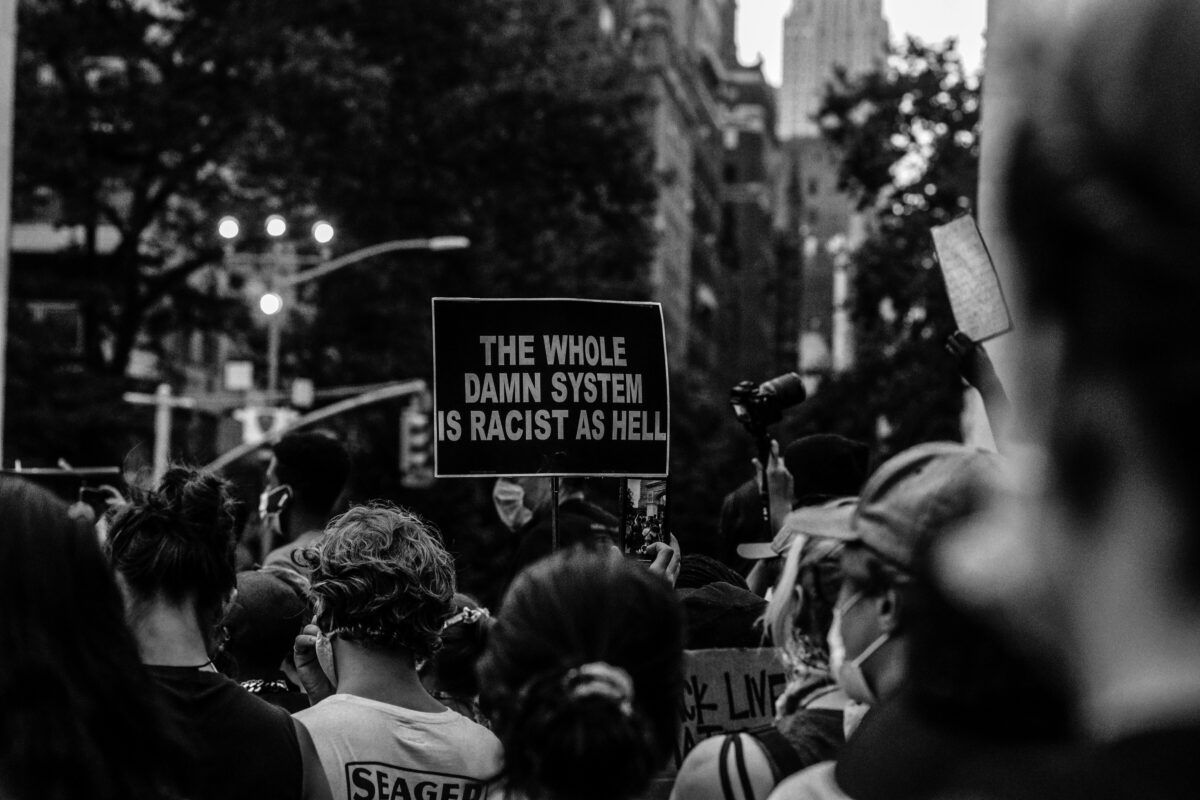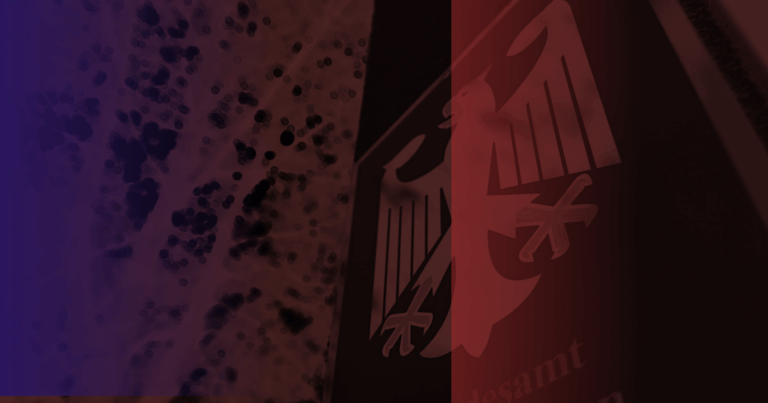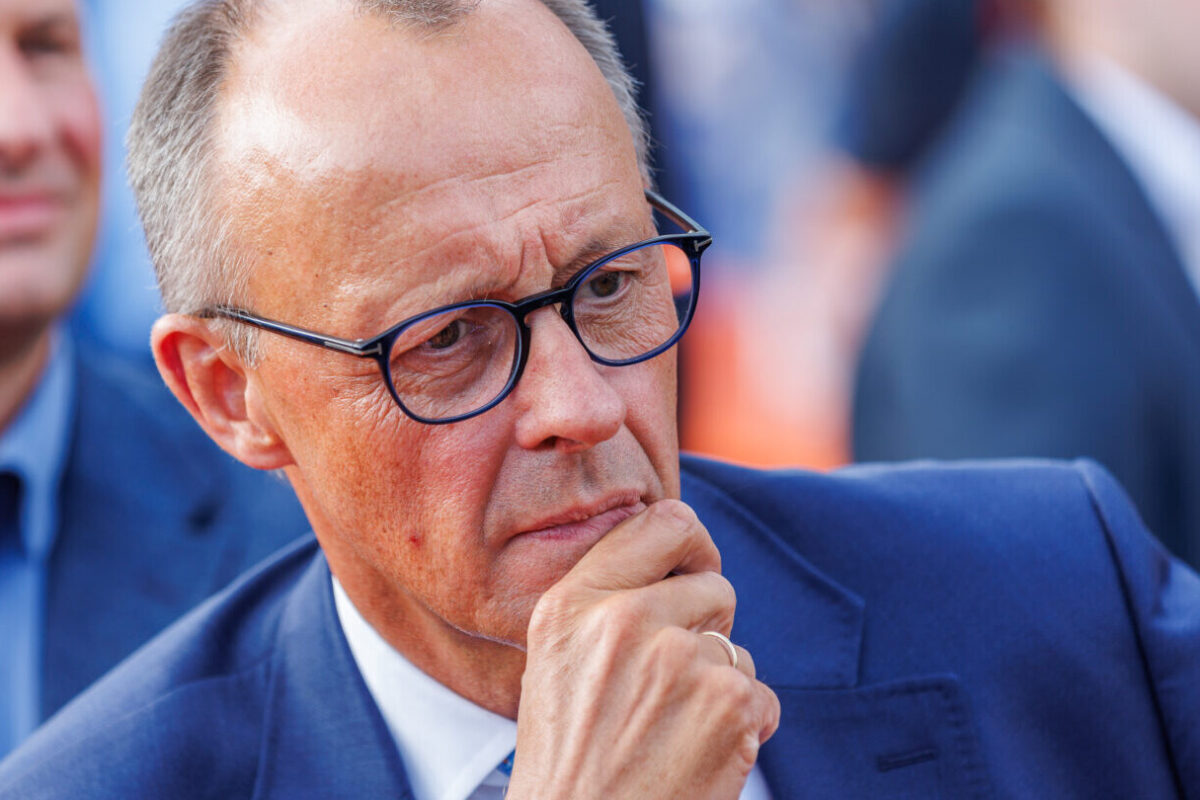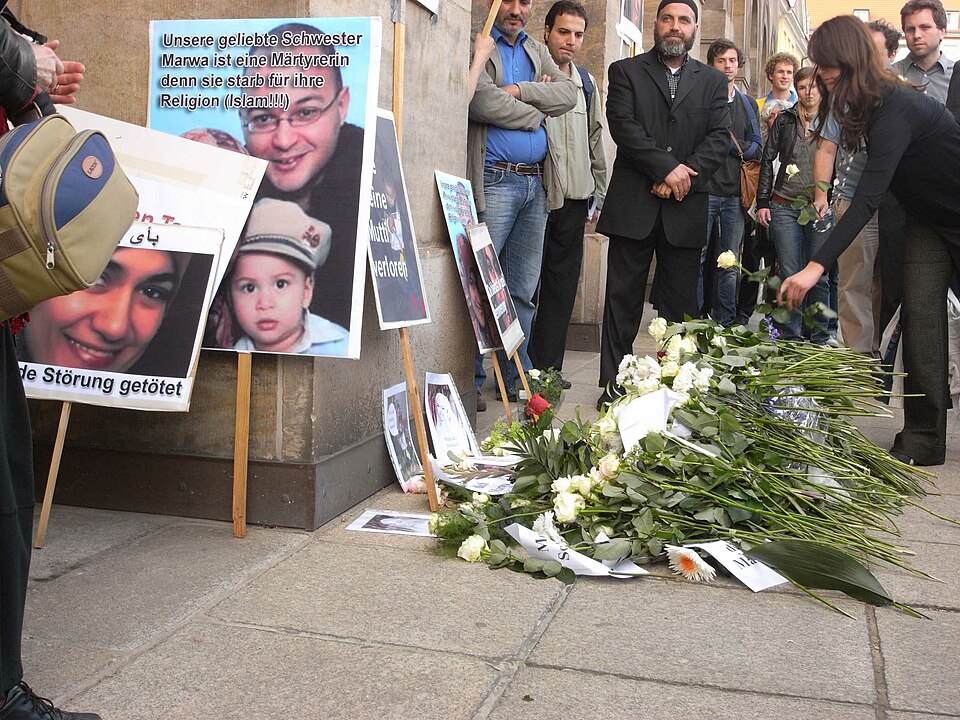Author’s note: this report is based on interviews taken in Summer 2023. Two important things have happened since then. Firstly, Israel’s genocidal bombing campaign of Gaza has meant that theleftberlin has been concentrating on more pressing issues and publication of this article has been delayed.
Secondly, Germany’s unquestioning support of Israel the systematic exclusion of artists who do not fit White Germany’s expected cultural norms. These include (among many other cases) the cancellation of Palestinian author Adania Shibli at the Frankfurt Book Fair, the closure of oyoun Cultural Centre because it hosted a Jewish organisation, and the cancellation of an exhibition in Saarland by the Jewish South African artist Candice Breitz.
I believe that the racist exclusion which occurred before October 7th is not separate to the artistic censorship which has happened since. On the contrary, it has helped create a climate in which it has become much easier for people holding power in the German Art world to exclude unwanted voices, including those calling for solidarity with Palestine.
***
The art world has a reputation – deserved or not – of being a haven of liberalism and internationalism. Some recent cases have shown that German art institutions function primarily as instruments of neoliberal capitalism, whose prejudices they reflect. This article will look at some of these cases and ask what they mean for the art scene as a whole, particularly regarding the inclusion of BIPoC artists.
Crossing Borders – Anomalie Art Club Berlin
On July 15th 2023, four visual artists – Michael Jabareen, Ramez Melhem, Salma El Shami, and Rasha Al Jundi – took part in an event “Crossing Borders: Artistic Narratives on Migration”. The event, at Anomalie Art Point, described itself as “an event showcasing the resilience, solidarity and creative talent of migrants in Berlin.”
The artists accuse the Anomalie Art Point scene of an extreme lack of professionalism and experience in handling any type of visual art materials. Artists were expected to wait 7 hours before anyone turned up to install their exhibitions. Two artists’ works were damaged, for which they are demanding compensation. Neither the participating artists not the curators received any payment for taking part in the event.
On the day of the event, artists report that they were told off for sitting on the “wrong table” and that people from their guest list were mistreated and insulted. One artist was told that they should just be grateful that Anomalie had provided space to show their art. When they complained, they were blocked and accused of sending “hate mail”.
The artists issued a statement aimed at “prevent[ing] this from happening again to other fellow artists of colour,” saying that “We cannot help but feel exploited and used as tokens by … a group of European organisers to maintain their reputation and image, as inclusive and diverse. They are neither one of those things.”
The statement also accused Syrian swimmer and refugee activist Sara Mardini of profiting from their work, saying that the organiser told them later that the event was organised to cover Mardini’s birthday costs by “selling more tickets through an art exhibition”. In reply, Mardini commented on the Instagram statement, saying that:
I was lied to by @anomalieartclub exactly like those artists and I was forced to do the event after I wanted to cancel it 3 times:)) i did already get in touch with anomalies and they’re not planning to help.
BIPoC Zelebrieren, Weimar
In 2021, artist Margarita Beltran created a project called BIPOC Zelebrieren (celebrating BIPoC, also known as Reclaiming Spaces). Together with F Hobein, Margarita applied for a scholarship at the Thüringen ministry for education, youth and sport. Because individual applications were not allowed, the scholarship was submitted in the name of WE UNITED, an organisation based in Weimar, which is affiliated with AWO (a German organisation for workers’ welfare).
WE UNITED says that its goals are “to raise awareness of social inequality and all kinds of discrimination in our society, to organise projects with and for people who are targeted by this discrimination, and to contribute and discourse about discrimination with everyone in the city.” Despite this, Beltran and Hobein’s experience was of imbalanced power dynamics, miscommunication, power struggles, and translation issues.
Margarita reports:
“I was presented with a contract for the photography work in German, a language in which I am not fluent. The contract was verbally translated to me, but this translation was inaccurate. While our conversations with WE UNITED’s contact person had established that I would retain ownership and rights to the images, the contract, which was not accurately translated, assigned usage rights to the organization without my knowledge.”
Although Margarita received the compensation that was assigned in the budget for the development of the project, she was not granted right of images. After a long delay, the printed images were returned to her, but because the dispute is unresolved and WE UNITED still claims that the pictures are theirs, she is stuck with them and is afraid to rent them or to sell them.
The emotional and mental toll was considerable; leaving her drained and unwell for months. Margarita attributes this damage to her mental health to having to face white supremacy within a project that she created herself. This damage is ongoing as the incapacity of resolving the issue means that she fears the consequences of what will happen if she uses her own images,
Looking back, Margarita says that she would have preferred to work with a smaller endeavour which acknowledges her value as a creative and felt itself to be invested in the issues which she was addressing. She recommends that any creative professional seek legal counsel before entering contracts with organizations and insist on translated written documents.
National German Jazz Prize
On 27th April 2023, the first German jazz prize was awarded in Bremen. As a response to the prize, around 50 musicians issued a statement. The statement identified “three highly problematic political aspects of the personnel selection in the advisory board, jury and German-wide nominations”. I will quote this part of their statement in full:
1. Jazz and history: Jazz has its roots in Black American culture. Its original practitioners lived and worked in a country where, to this day, racist violence is part of everyday life. This continues to develop in many forms in Germany as well. Therefore, White people who make their living playing, presenting, and writing about this music must educate themselves about structural racism and discrimination in our society and make every effort to dismantle the structures that uphold racism. Our foremost problem to address would be the exclusion of BPoC jazz practitioners from funding, awards and juries. The under-representation of BPoC board and jury members, as well as nominees on a national level shows a lack of care, solidarity and furthermore recognition for these communities. This enforces the narrative that to work and gain recognition within Germany’s jazz scene in 2021, you need to be White.
2. Cultural diversity: It is dishonest for a state institution to claim to honor cultural diversity but at the same time neglect to make intersectionality part of their so-called affirmative action. The gender diversity achieved at this year ́s German Jazz Prize is a very important step for the jazz scene, however it is just one small aspect of diversity – and by far not enough. Choosing a mostly White and academic personnel for the board, jury and German nominees, reflects the institutional racism, transphobia, ableism and classism inherent to Germany’s cultural funding structures. Therefore, the prize has failed to honor the very cultural plurality of the German jazz scene outlined in the statement by Prof. Monika Grütters MdB, Federal Government Commissioner for Culture and the Media.
3. George Floyd and Black Lives Matter, Hanau, and NSU: The past years’ events have made it impossible for anyone to fail to recognize the ongoing systematic exclusion, discrimination, exploitation and violence against Black people and People of Color in societies that prioritize White people. Being uninformed or unaware is no longer an excuse. A cultural award that honors Black music has a duty to address and counteract these issues by ensuring that Black people and People of Color are not excluded from leadership positions in the cultural sector. An important step toward this would be to appoint more BPoC members to advisory boards and juries. A change in structures must come from everyone involved – musicians, journalists, promoters, label owners and cultural politicians. To refrain from doing so is tantamount to accepting White supremacy. The fact that the majority of those in charge of this award – including the people who are nominated on a national level – are White shows a highly problematic dismissal of White society that is unjustifiable. We do not accept this.
The musicians demanded an explanation for the lack of intersectional representation and to discuss how BIPoC musicians can finally be properly included in awards for a music style which has its origins in the experience and oppression of BIPoC people.
Yaam, Berlin
Even venues which actively promote BIPoC artists are not immune. Yaam club in Berlin has a deserved reputation for its diverse cultural programme. A FLINTA BIPoC DJ from London reports the following:
“I recently attended an open decks session for which I was the host, and the aim of the workshop was to encourage FLINTA to feel comfortable coming to the venue. The treatment from the male staff members including security created the opposite environment.
I was physically assaulted by a male bouncer when I had asked them to call a manager to confirm that this event was actually going on, the bouncer refused, saying ‘ich arbeite nicht für dich’, refusing to speak English also (at a so called international and culture friendly venue) and ended up having to scream at him to get him off me.
Following this, the staff at the venue refused to acknowledge the issue, and other FLINTA hosts received intimidating comments and behaviour from male staff at the venue. We are no longer continuing the sessions and will look for another venue to host it, however the funding Yaam had for this had come from bodies such as ClubKultur and club commission to diversify spaces.
Instead of that funding going to FLINTA who are looking to start their own initiatives, they are going to problematic venues who continue to treat diversity like ticking a box, and then just perpetuate their systematic prejudice and aggression towards these groups.
This is problematic on so many levels especially when the majority of the people on the receiving end of this treatment are BIPoC too – showing the systematic culture of abuse towards marginalised communities time and time again in this city.”
What is happening and why?
Some people will dismiss each of the cases I’ve described as over-reactions by emotional artists. But they are the tip of the iceberg of a worrying trend. A number of things are happening here.
First, we should stop thinking about Art being pure and unaffected by the society in which we live. Art is Big Business, but artists still need to eat. Although a few artists make phenomenal amounts of money, most working artists struggle to survive and suffer from an imbalance of power. The relative isolation of their work makes them easier to exploit.
Secondly, the systemic racism which exists in the rest of society is reflected in the Art world. This means that a disproportionate amount of decisions are made by rich white males, or by faceless corporations which have “invested” in culture.
Thirdly, although quotas for BIPoC artists is a tragically necessary reaction to the relative lack of opportunity for artists who do not fit a certain profile, there are some problems which quotas do not solve. A number of BIPoC artists have been accepted to fulfil a quota and then systematically ignored.
When I spoke to Berlin-based Palestinian artist and film maker Pary El-Qalqili about this. Pary said: “It’s complex. Some PoC voices are wanted and needed to show how diverse the art scene in Germany now is. I am so tired of this “
Rasha Al-Jundi, one of the artists who exhibited at Crossing Borders, agrees: “we were viewed as less worthy by these organisers. This is just a fucked up reflection of the Art sector which takes advantage of artists from different backgrounds to tick the box for funding. Spaces that are not even equipped to handle art are promoting themselves as art spaces when they’re not.”-
Better Art requires better social conditions for Artists
We can draw different conclusions from this direct and indirect discrimination. Margarita Beltran from Weimar says: “this experience cemented my conviction to avoid collaborations with white institutions on matters of racism or intersectionality. I firmly believe that such topics should be managed within institutions led by individuals of colour.”
While I agree with Margarita that we need to improve the woeful BIPoC representation in cultural institutions, I believe that the combination of an Art which is driven by commerce and structural racism means that this is something which can be solved merely by having more Black faces at the top. While we fight for improvements in the Art world in the here and now, to grant full access to creative voices we need a different society.
In the German Ideology, Karl Marx criticised a society where “as long as a cleavage exists between the particular and the common interest, as long, therefore, as activity is not voluntarily, but naturally, divided, man’s own deed becomes an alien power opposed to him, which enslaves him instead of being controlled by him.
It is this enforced alienation which stunts art and means that artists – and in particular artists who suffer certain forms of oppression – are forced to spend time battling unhelpful authorities, challenging unfair contracts, and having to permanently battle disrespectful microagressions – time which could be spent producing great Art. They deserve our support in their various battles for justice.
In this article I have only mentioned a few cases, but have been told about many more. Many artists are reluctant to come forward as it is hard enough to show their works without courting trouble from people with more power than them. If you are an artist who has suffered discrimination, feel free to contact me on team@theleftberlin.com, so that we can write a follow-up article which exposes the breadth of everyday discrimination in the German cultural scene. We are particularly interest in the current repression of Palestinian voices.




